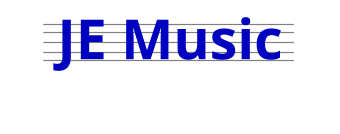(Welling. Kent)
07919 356980

Lesson Guide - Slow Country Gospel

TAB & ‘one to one’ tuition
available to members
John’s notes;
I’ve arranged this short (45 seconds) ‘Country /
Gospel’ tune to demonstrate how useful knowing the
scales associated with the ‘A’, ‘D’ and ‘E’ shape
chords are.
The ‘A’, ‘D’ and ’E’ shape chords get their name from
the basic ‘open’ position chords people normally
learn when starting to play the guitar. However,
moving these chord ‘shapes’ up and down the fret
board alters the name of the chord being played. For
instance, if you play a standard A Major chord on the
2
nd
fret then move it to the 5
th
fret and play the D,G
and B strings only (this is called a triad) you are
playing a C Major ‘A shape’ chord - very useful ! The
same applies to the other two ‘shapes’. Not only that
but each of these 3 chord shapes have their own
built in Major scale, and that is how musicians can
play solo leads etc over these triad chord shapes in
a very melodic way.

Any Questions - Just ask
Also note, you are not limited when soloing to playing the notes taken from the chord you are playing over. You can always
play the scale of the ‘KEY’ the tune is in and ignore the chords, especially if the chord progression is moving along quickly. An
example of this is phrase 7. Here I’m playing notes from the E Major scale position 5 ignoring the fact a B Major chord is
underneath.
Keep in mind that playing notes only from the basic key still needs to serve the chord progression otherwise it can sound a bit
bland, after-all, chords serve to ‘flavour’ a tune, this is why professional musicians use both methods i.e playing through the
chord changes AND playing notes from the basic key of the tune. It all depends on the sound the musician wants!
.jpg)
.jpg)
(Welling. Kent)
07919 356980


Any questions - Just ask
Lesson Guide - Slow Country Gospel
John’s notes;
I’ve arranged this short (45 seconds) ‘Country / Gospel’
tune to demonstrate how useful knowing the scales
associated with the ‘A’, ‘D’ and ‘E’ shape chords are.
The ‘A’, ‘D’ and ’E’ shape chords get their name from the
basic ‘open’ position chords people normally learn when
starting to play the guitar. However, moving these chord
‘shapes’ up and down the fret board alters the name of the
chord being played. For instance, if you play a standard A
Major chord on the 2
nd
fret then move it to the 5
th
fret and
play the D,G and B strings only (this is called a triad) you
are playing a C Major ‘A shape’ chord - very useful ! The
same applies to the other two ‘shapes’. Not only that but
each of these 3 chord shapes have their own built in Major
scale, and that is how musicians can play solo leads etc
over these triad chord shapes in a very melodic way.
Also note, you are not limited when soloing to playing the
notes taken from the chord
you are playing over. You
can always play the scale
of the ‘KEY’ the tune is in
and ignore the chords,
especially if the chord
progression is moving
along quickly. An example
of this is phrase 7. Here I’m
playing notes from the E
Major scale position 5 ignoring the fact a B Major chord is
underneath.
Keep in mind that playing notes only from the basic key still
needs to serve the chord progression otherwise it can
sound a bit bland, after-all, chords serve to ‘flavour’ a tune,
this is why professional musicians use both methods i.e
playing through the chord changes AND playing notes from
the basic key of the tune. It all depends on the sound the
musician wants!

TAB & ‘one to one’ tuition
available to members
.jpg)